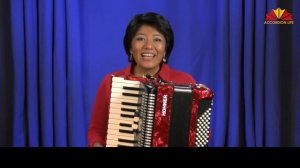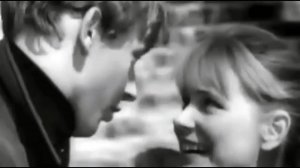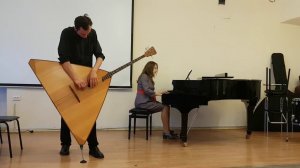
 2:14
2:14
2025-09-19 09:50

 47:20
47:20

 47:20
47:20
2025-09-20 15:00

 6:03
6:03

 6:03
6:03
2024-04-13 20:59

 4:27
4:27

 4:27
4:27
2025-09-27 11:35

 5:06
5:06

 5:06
5:06
2025-09-21 14:55

 1:06:57
1:06:57

 1:06:57
1:06:57
2025-11-11 16:23

 3:36
3:36

 3:36
3:36
2025-09-25 21:39

 50:57
50:57

 50:57
50:57
2025-09-10 15:14

 4:28
4:28

 4:28
4:28
2025-09-21 14:53

 4:01
4:01

 4:01
4:01
2025-09-13 00:04

 3:04
3:04

 3:04
3:04
2025-09-26 17:00

 7:40
7:40

 7:40
7:40
2023-10-01 05:06

 6:45
6:45

 6:45
6:45
2020-03-18 14:08

 2:18
2:18

 2:18
2:18
2025-09-19 12:02

 3:28
3:28

 3:28
3:28
2025-09-23 06:03

 3:10
3:10

 3:10
3:10
2025-09-22 15:00

 1:23
1:23

 1:23
1:23
2025-09-13 02:08

 39:15
39:15
![Рейсан Магомедкеримов - Моя мадам (Премьера клипа 2025)]() 3:28
3:28
![Вика Ветер - Еще поживем (Премьера клипа 2025)]() 4:31
4:31
![KLEO - Люли (Премьера клипа 2025)]() 2:32
2:32
![Соня Белькевич, Олег Семенов - Увы, мадам (Премьера 2025)]() 3:33
3:33
![Игорь Балан - Белая зима (Премьера 2025)]() 3:10
3:10
![Динара Швец - Нас не найти (Премьера клипа 2025)]() 3:46
3:46
![Аброр Киличов - Тим-Тим (Премьера клипа 2025)]() 4:42
4:42
![Карина Салагати - Сердце горца (Премьера клипа 2025)]() 3:18
3:18
![SHAXO - Пьяница (Премьера клипа 2025)]() 3:32
3:32
![10AGE, Роса ft. С. Есенин - Вот уж вечер (Премьера клипа 2025)]() 4:01
4:01
![Фрося - На столике (Премьера клипа 2025)]() 1:42
1:42
![Ахрор Гуломов - Ёмгирлар (Премьера клипа 2025)]() 3:49
3:49
![Рузибек Кодиров - Бинафша (Премьера клипа 2025)]() 3:31
3:31
![Ислам Итляшев - Не реви (Премьера клипа 2025)]() 2:41
2:41
![KhaliF - Я розы тебе принес (Премьера клипа 2025)]() 2:06
2:06
![Зульфия Чотчаева - Холодное сердце (Премьера клипа 2025)]() 2:52
2:52
![Бекзод Хаккиев - Айтаман (Премьера клипа 2025)]() 2:41
2:41
![Zhamil Turan - Губки не целованы (Премьера клипа 2025)]() 2:37
2:37
![Like Nastya – Fly Girl (Official Video 2025)]() 2:01
2:01
![Рустам Нахушев - Письмо (Лезгинка) Премьера клипа 2025]() 3:27
3:27
![Только ты | All of You (2025)]() 1:38:22
1:38:22
![Святые из Бундока | The Boondock Saints (1999) (Гоблин)]() 1:48:30
1:48:30
![Гедда | Hedda (2025)]() 1:48:23
1:48:23
![От заката до рассвета | From Dusk Till Dawn (1995) (Гоблин)]() 1:47:54
1:47:54
![Французский любовник | French Lover (2025)]() 2:02:20
2:02:20
![Баллада о маленьком игроке | Ballad of a Small Player (2025)]() 1:42:60
1:42:60
![Девушка из каюты №10 | The Woman in Cabin 10 (2025)]() 1:35:11
1:35:11
![Чумовая пятница 2 | Freakier Friday (2025)]() 1:50:38
1:50:38
![Кей-поп-охотницы на демонов | KPop Demon Hunters (2025)]() 1:39:41
1:39:41
![Дом из динамита | A House of Dynamite (2025)]() 1:55:08
1:55:08
![Плохой Санта 2 | Bad Santa 2 (2016) (Гоблин)]() 1:34:55
1:34:55
![Все дьяволы здесь | All the Devils are Here (2025)]() 1:31:39
1:31:39
![Свинтусы | The Twits (2025)]() 1:42:50
1:42:50
![Школьный автобус | The Lost Bus (2025)]() 2:09:55
2:09:55
![Большое смелое красивое путешествие | A Big Bold Beautiful Journey (2025)]() 1:49:20
1:49:20
![Хищник | Predator (1987) (Гоблин)]() 1:46:40
1:46:40
![Пойман с поличным | Caught Stealing (2025)]() 1:46:45
1:46:45
![Порочный круг | Vicious (2025)]() 1:42:30
1:42:30
![Плохой Cанта 2 | Bad Santa 2 (2016) (Гоблин)]() 1:28:32
1:28:32
![Свайпнуть | Swiped (2025)]() 1:50:35
1:50:35
![Сборники «Ну, погоди!»]() 1:10:01
1:10:01
![Синдбад и семь галактик Сезон 1]() 10:23
10:23
![Шахерезада. Нерассказанные истории Сезон 1]() 23:53
23:53
![Сборники «Приключения Пети и Волка»]() 1:50:38
1:50:38
![Последний книжный магазин]() 11:20
11:20
![Зомби Дамб]() 5:14
5:14
![Артур и дети круглого стола]() 11:22
11:22
![Врумиз. 1 сезон]() 13:10
13:10
![Новое ПРОСТОКВАШИНО]() 6:30
6:30
![Паровозик Титипо]() 13:42
13:42
![Пип и Альба. Приключения в Соленой Бухте! Сезон 1]() 11:02
11:02
![Агент 203]() 21:08
21:08
![Пиратская школа]() 11:06
11:06
![МегаМен: Полный заряд Сезон 1]() 10:42
10:42
![Мультфильмы военных лет | Специальный проект к 80-летию Победы]() 7:20
7:20
![Монсики]() 6:30
6:30
![Хвостатые песенки]() 7:00
7:00
![Сандра - сказочный детектив Сезон 1]() 13:52
13:52
![Псэмми. Пять детей и волшебство Сезон 1]() 12:17
12:17
![Мотофайтеры]() 13:10
13:10

 39:15
39:15Скачать Видео с Рутуба / RuTube
| 256x144 | ||
| 400x224 |
 3:28
3:28
2025-11-20 13:54
 4:31
4:31
2025-11-11 12:26
 2:32
2:32
2025-11-11 12:30
 3:33
3:33
2025-11-07 15:10
 3:10
3:10
2025-11-07 14:48
 3:46
3:46
2025-11-12 12:20
 4:42
4:42
2025-11-17 14:30
 3:18
3:18
2025-11-19 11:48
 3:32
3:32
2025-11-18 12:49
 4:01
4:01
2025-11-11 17:26
 1:42
1:42
2025-11-12 12:55
 3:49
3:49
2025-11-15 12:54
 3:31
3:31
2025-11-15 12:51
 2:41
2:41
2025-11-18 12:35
 2:06
2:06
2025-11-11 18:00
 2:52
2:52
2025-11-18 11:48
 2:41
2:41
2025-11-17 14:22
 2:37
2:37
2025-11-13 11:00
 2:01
2:01
2025-11-10 13:14
 3:27
3:27
2025-11-12 14:36
0/0
 1:38:22
1:38:22
2025-10-01 12:16
 1:48:30
1:48:30
2025-09-23 22:53
 1:48:23
1:48:23
2025-11-05 19:47
 1:47:54
1:47:54
2025-09-23 22:53
 2:02:20
2:02:20
2025-10-01 12:06
 1:42:60
1:42:60
2025-10-31 10:53
 1:35:11
1:35:11
2025-10-13 12:06
 1:50:38
1:50:38
2025-10-16 16:08
 1:39:41
1:39:41
2025-10-29 16:30
 1:55:08
1:55:08
2025-10-29 16:30
 1:34:55
1:34:55
2025-09-23 22:53
 1:31:39
1:31:39
2025-10-02 20:46
 1:42:50
1:42:50
2025-10-21 16:19
 2:09:55
2:09:55
2025-10-05 00:32
 1:49:20
1:49:20
2025-10-21 22:50
 1:46:40
1:46:40
2025-10-07 09:27
 1:46:45
1:46:45
2025-10-02 20:45
 1:42:30
1:42:30
2025-10-14 20:27
 1:28:32
1:28:32
2025-10-07 09:27
 1:50:35
1:50:35
2025-09-24 10:48
0/0
 1:10:01
1:10:01
2025-07-25 20:16
2021-09-22 23:09
2021-09-22 23:25
 1:50:38
1:50:38
2025-10-29 16:37
 11:20
11:20
2025-09-12 10:05
 5:14
5:14
2024-11-28 13:12
 11:22
11:22
2023-05-11 14:51
2021-09-24 16:00
 6:30
6:30
2018-04-03 10:35
 13:42
13:42
2024-11-28 14:12
2021-09-22 23:36
 21:08
21:08
2025-01-09 16:39
 11:06
11:06
2022-04-01 15:56
2021-09-22 21:43
 7:20
7:20
2025-05-03 12:34
 6:30
6:30
2022-03-29 19:16
 7:00
7:00
2025-06-01 11:15
2021-09-22 20:39
2021-09-22 22:23
 13:10
13:10
2024-11-27 14:57
0/0

